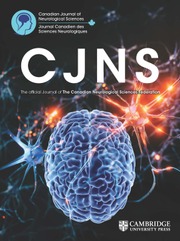Article contents
Acute Electrical Stimulation of Nucleus Ambiguus Enhances Immune Function in Rats
Published online by Cambridge University Press: 02 December 2014
Abstract
Up to now, many “immunoactive” brain areas have been identified, such a hypothalamic nuclei, brain reward system; but the nucleus ambiguous (Amb), a nucleus nervi vagis of medulla oblongata, was less well studied in neuroimmunomodulation.
In order to obtain more profound comprehension and more knowledge on Amb, we studied the effect of acute electrical stimulation of Amb on thymus and spleen activity in rat. A stimulator was applied to stimulate the Amb of the anaesthetic rats using the parameter at 100μAx5ms x100 Hz every 1s for 1 min. The levels of TGF-β and thymosin-β4 mRNA in thymus, the release of IL-2 and IL-6 at splenocyte in vitro and splenic lymphocyte proliferation were measured at hour 0.5,1,2,3 following the electrical stimulation.
The results showed that concanavalin A (Con A)-induced splenic lymphocyte proliferation and the release of IL-2 and IL-6 were all significantly enhanced at 0.5, 1, and 2 h following effective Amb stimulation as compared to in the control group. However, as compared to in the control group, the levels of TGF-β and thymosin-β4 mRNA in the thymus were both remarkably reduced at 0.5, 1, and 2 h following effective Amb stimulation.
These findings reveal that the Amb participates in the modulation of animal immune functions.
Résumé:
Plusieurs zones immunoactives du cerveau ont ete identifiees jusqu’a maintenant, dont les noyaux hypothalamiques (corps de Luys, noyau sous–thalamique), le systeme de recompense du cerveau. Cependant, il existe peu d’etudes sur le role du noyau ambigu (Amb), le noyau du nerf vague situe dans le bulbe rachidien, dans la neuro–immunomodulation.
Nous avons etudie l’effet de la stimulation electrique aigue de l’Amb sur l’activite du thymus et de la rate chez le rat afin de mieux connaitre et de comprendre le role de l’Amb. Un stimulateur a ete installe chez des rats anesthesies pour stimuler l’Amb. Le parametre utilise etait de 100µA x 5 ms x 100 Hz toutes les 1 s pendant 1 min. Les niveaux de TGF–β et d’ARNm de la thymosine β4 dans le thymus, la liberation d’IL–2 et d’IL–6 par des splenocytes in vitro et la proliferation lymphocytaire splenique ont ete mesures aux temps 0,5 h, 1 h, 2 h et 3 h apres la stimulation electrique.
La proliferation lymphocytaire splenique induite par la concanavaline A (Con A) et la liberation d’IL–2 et d’IL–6 etaient significativement augmentees aux temps 0,5 h, 1 h et 2 h apres une stimulation efficace de l’Amb par rapport au groupe temoin. Cependant, les niveaux de TGF–β et d’ARNm de la thymosine β dans le thymus etaient diminues de facon importante par rapport au groupe temoin aux temps 0,5 h, 1 h et 2 h
Selon ces observation, l’Amb participe a la modulation des fonctions immunitaires chez l’animal.
- Type
- Original Articles
- Information
- Copyright
- Copyright © The Canadian Journal of Neurological 2008
References
- 2
- Cited by




